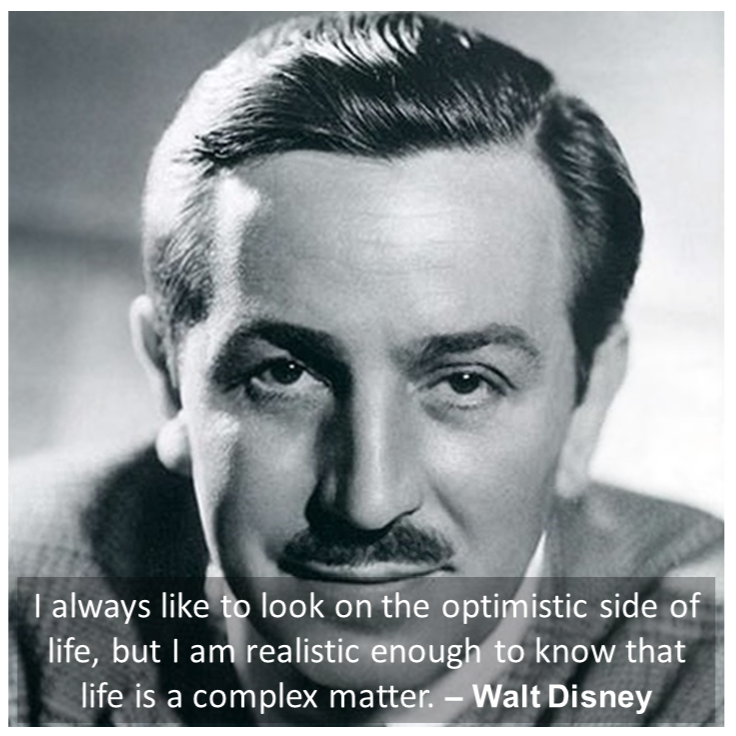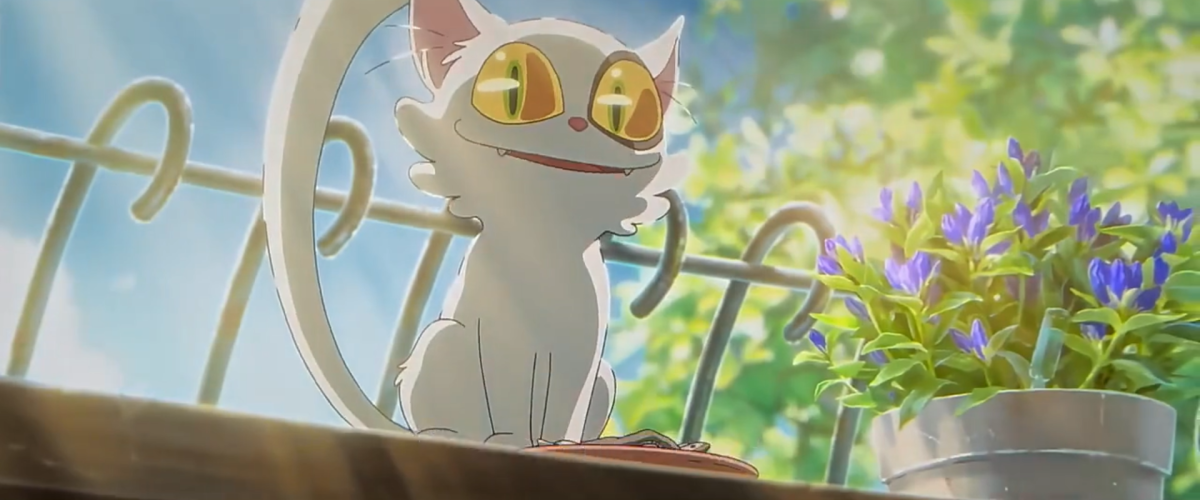Storytelling is one of the long lived arts that defines – ‘we as the human beings’ . Right from the cave drawings to writing novels to recent advances in film-making – storytelling will never seize to attract and strongly influence everyone. Storytelling conveys emotions, learnings, experiences on very personal level. Although the stories, anecdotes seem simple but they can carry deep meanings and eternal ideas. Developing such simple yet deep, intricate stories is a skill of the great storyteller. Japanese anime is already known for such distinctive storytelling and have that irreplaceable throne in their name for many years. On superficial observation it will seem like an intervention between some fictional and fantasy-based cartoon characters but deep down it is really emotional and closer to the heart ‘master storytelling’.
One such great movie I had pleasure to watch in theater was ‘Suzume no Tojimari’ directed by Makoto Shinkai (新津 誠). The movie is based on the ‘Tōhoku earthquake and tsunami’ happened in 2011 which was the most powerful earthquake in Japan and the fourth most powerful earthquake in the recorded history of the world. There were 19759 deaths, 6242 injured and 2553 people were missing due to this earthquake. Suzume no Tojimari is the story of a 17-year-old girl called Suzume (鈴芽) who tries to save Japan from a series of earthquakes with Souta (草太) who is an expert and responsible person to avoid such events. We will discuss this movie – so spoilers ahead. And I will suggest to watch the movie first to understand the ideas conveyed hereon.

Many of us are trying to attribute this movie to ‘an animated fantasy adventure movie.’ But as the great stories go, this movie has so many hidden layers and details in the storytelling that it will be shame to categorize this movie only as a fantasy movie. I would say Suzume’s story is everyone of our story even though the events are not exactly the same. I have many points to prove so and that exactly might be the main intent of the storytellers of Suzume. So here it goes…
The Importance of Memories in Our Lives
One question –
What is the closest invention we have to the Time Machine?
I know many of us will have different answers but most of the answers converge to ‘the Camera.’ If one adds more sophistication to the thought then the camera points to ‘the Memories.’ It will be an understatement if we say that memories are one inseparable part of our lives. Rather we are our memories – some of those might be distant, old and unclear but we would never forget how they make us feel about something specific, something so special that it cannot be transferred to others through the experiences of mere physical senses.
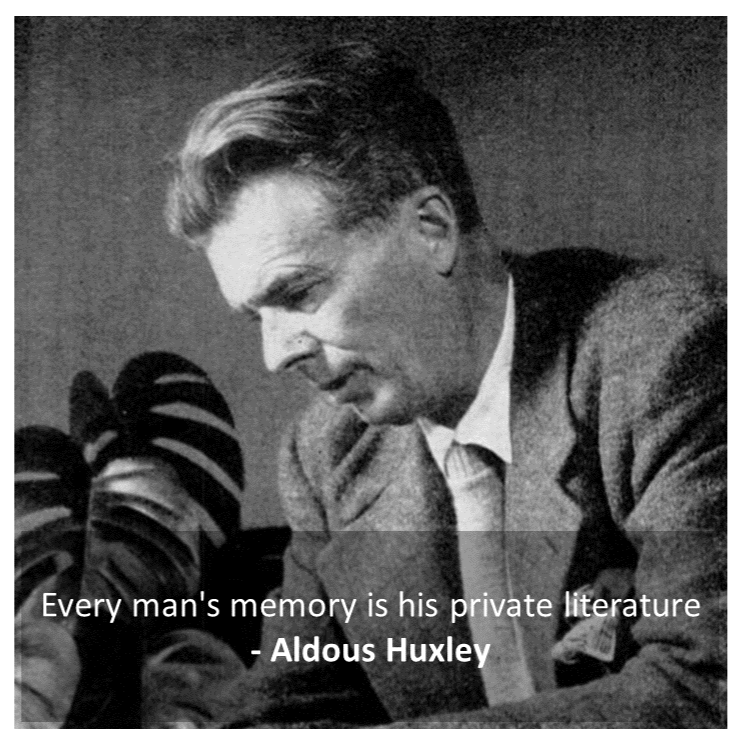
You must appreciate that each and every learning, every skill, every habit that you have, everything – every person that you like, love or hate or do not even care about has some story, some event, some life experience attached to them. We are what we think our memories are and please note that not all the memories are crystal clear in our minds. Some are very clear and some are vague. In the end, memories are the most intimate format of emotions that we have. It is almost impossible to transfer them to other person one-to-one, unless the person was the part of the same experience (and even after that the memories won’t be exactly the same for either of the persons)
And the memories are double edged swords. Some of the memories have ability to invoke the darkest and the most depressed emotions which can haunt the person their whole life. At the same time some memories are far more powerful that can empower the person with positivity even when they are going through their toughest times in reality. We all have bad and good memories. How we handle them over the time and how we balance the good and bad memories is what our personality, our decision-making is. Even a single bad memory can turn one’s life upside down and a single good memory can make the same person survive through endless pain and suffering.
In the case of Suzume, you will realize that her whole personality is driven by the memories and the grieving emotions of loss of her mother when she was only 4-years-old (‘the dark/ black diary days’). Her mind is always subconsciously searching for her mother lost in the earthquake of 2011. (Which is how the movie opens) Suzume’s nursing skills for Souta are not mere accidental choice, it is the memory of her mother being a skilled nurse and a skilled craftsman which inspires her to become the same person.
When Souta is closing the doors for stopping the worm coming out of the gates, he always speaks about remembering the people who lived there. There is great message in such repeating events shown throughout the story. An earthquake causing demonic- destructive worm rises from the gates where some disasters were already happened and many lives were lost. The gates are closed by ‘the Closers’ like Souta who summon the power of the great gods and recall the life experiences of the people who lived there. Suzume gains the same ability when she unknowingly moves the keystone kept to hold the demonic worm on the gates. The demonic worm is actually the representation of the pain, grief and sad feelings all people are carrying in their hearts, when they lost their loved ones in those disasters. Closing the doors on such demonic worms of grief is actually the metaphor to keeping these bad memories, sad emotions at the gates.
One more beautiful idea conveyed in the events of stopping the worm on the gates, is the rainfall after the demon gets contained. When a person gets fully filled with some strong emotions and when the person truly could not hold upon them, when they are overwhelmed, these emotions are immediately translated into tears and cry. Crying relieves this load of overwhelming memories of loss and grief. The story of Suzume and Souta’s attempt to contain the worm translates exactly the same idea in a beautiful way.
Daijin (ダイジン) – The Symbol of an Unconditional Love

The key point of attraction for whole story is how Daijin – the talking cat carries himself as a pivotal character. Daijin is actually one of the ‘keystones’ – a totem who is holding the worm and prevent the disasters thereby. You will notice that Daijin is an emaciated and thin, malnourished cat at first. When Suzume acknowledges her love for the Cat, he becomes really happy and magically gets healthy instantly. When Daijin understands the events between Suzume and Souta, he feels that Suzume’s love for him will fall short if Souta is always there. Thus, Daijin intentionally transfers his duties to Souta making him the keystone by transferring Souta’s Soul into Suzume’s three-legged kid’s chair. Daijin guides Suzume and Souta to every possible gate to stop the worm from causing the disasters at different locations. Throughout the story Diajin feels like a nuisance demi-god creating troubles for Suzume and Souta. In the end, Suzume realizes that Daijin saved her life many times when she was unconscious and also guided her to bring back Souta to the living world. There is a moment in the movie where Suzume has to lose Souta to stop the earthquake and she thinks that if Daijin would not have cursed Souta to a keystone, she would not have lost Souta. In the grief of Souta’s loss Suzume blames Daijin and disproves her love for Daijin; Daijin instantly loses his health when he realizes that Suzume no longer loves him. Furthermore, when Suzume embarks on the journey to bring back Souta from Ever-After Daijin still accompanies her. He also helps her to find the exact door to bring back Souta.
When Daijin realizes that Suzume can sacrifice her own life to bring back Souta to living world, he instantly sacrifices his life so that Suzume will not to sacrifice her life. Even after Suzume’s hate for him, Daijin stands up for her when Suzume’s aunt expresses her regret for spending important years of her youth to take care of Suzume after the loss of her sister in the earthquake.

(From Makoto Shinkai’s Suzume no Tojimari)
The whole point to pick out these moments in the story is to highlight how some people in our lives are doing exactly the same for us and we are still unaware of their good deeds for us. Daijin is the symbolic representation of such people who actually exist in our real life. These people are always there to help us, even when they do a favor for us – they don’t care whether we notice them or whether we return the favor, they only care if we are in good condition. All they expect is our appreciation, our love for them. Daijin’s character is an epitome of such people who love us unconditionally. These people are present in every one of our lives; they help us, guide us, lead us to the right doors, love us, prevent us from known/ unknown problems without expecting anything but our love and appreciation in return. Try to find such ‘Daijin’ s in your lives as soon as possible and treasure them for your life forever.
Materialism and The Intangibility of Memories
Suzume’s story is about the loss of the loved ones and coping with their non-existence. The only way through which we can experiences our lost loved ones is through their memories. Life of a person especially a loved one is profound and invaluable in such a way that it cannot be weighed down to some everyday object. It is also paradoxical that when we lose the contact with such people forever, the objects which these people were associated with become precious for us. People actually have such objects which remind them of certain person they appreciated, loved.
Suzume’s chair crafted by her mother is one such object which she loves with all her life. It is the immediate connection to her mother. The chair has lost one leg during the disaster in her childhood also indicates how she has lost some part of her life as her mother’s loss. The moment Souta’s soul gets transferred to this three-legged chair, in the exact moment Suzume gets attached to him on deeper level unknowingly.
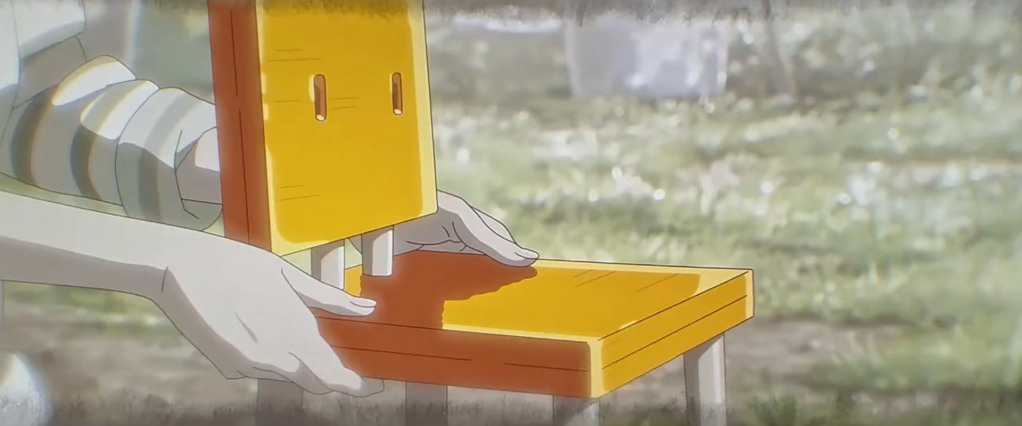
(From Makoto Shinkai’s Suzume no Tojimari)
It is really the best trick played by the writers to convey our attachment to certain everyday objects. Our memories for our loved ones are strong in such a way that they bear the potential to make a non-living object living through our memories. We all carry such objects which remind us of our loved ones. We cannot express and make others feel how strong emotions we have for such people hence we try to associate these emotions to certain objects. These totems are the physical objects which help us to get over the grieving memories of our loved ones. If these objects were not there, we would have been consumed by the sad memories of loss. These objects somehow mimic the presence of the people we love and/or loved. They might be a piece of trash for others but they are invaluable for us. Suzume’s story captures this in a beautiful way. It shows the softer side of materialism, rather it helps us to realize the worth of simple and everyday objects.
For the exact reason we are not that much attached when Daijin is represented as a keystone in the first act of the movie but we feel really sad when Daijin returns to his keystone form in the conclusion of the movie.
The Realization of Sacrifices
Suffering the loss of loved ones is only half part of the story. This suffering is apparent because it is experience-able through our senses. What cannot be experienced through our senses is the sacrifices our loved ones made for us. It really tragic that people hardly notice what sacrifices are being done to make their lives better every day. In Suzume’s story, her aunt Tamaki sacrifices her youth in order to take care of Suzume upon the death of her sister Tsubame. She remained unmarried and also faced the bad comments from people while she took care of Suzume. The sacrifice she made for the love of her sister made who Suzume really is – a caring and loving girl. Suzume is unaware of this in the start of the story. Suzume’s aunt’s concern for her makes Suzume think of her like a control freak but she forgets that it is genuine care for her and her well-being. There are such people especially people close to us who are fighting different battle for our well-being unknowingly. As they are really close to us and we see them every day their value for us lessens over the time. It is only when we are forced to lose their company then we realize the value of their presence.
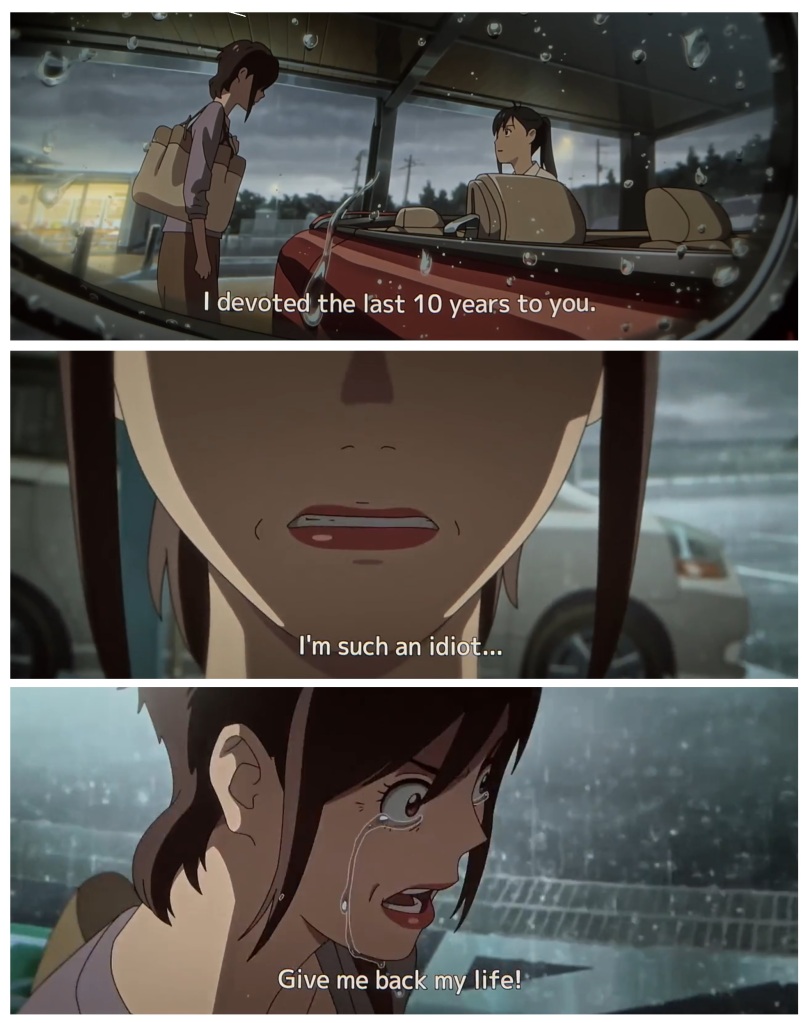
(From Makoto Shinkai’s Suzume no Tojimari)
Suzume realizes this when her aunt vents out all the frustration, she had for her. It also shows how the true relationships even after having some bitterness endure the test of tough times only because of the unconditional love.
Souta realizes that in order to save many lives of the city of Tokyo he will have to sacrifice his life. His life purpose is the major driver here which further evolves into his love for Suzume later. Suzume also realizes the sacrifice she has to do by letting go of Souta for the keystone. She, at first is unaware of the feelings for Souta as he was always accompanying her in every trouble on the journey, but when she is presented with the problem where she has to choose either many innocent lives or Souta then she realizes that how important Souta was for her.
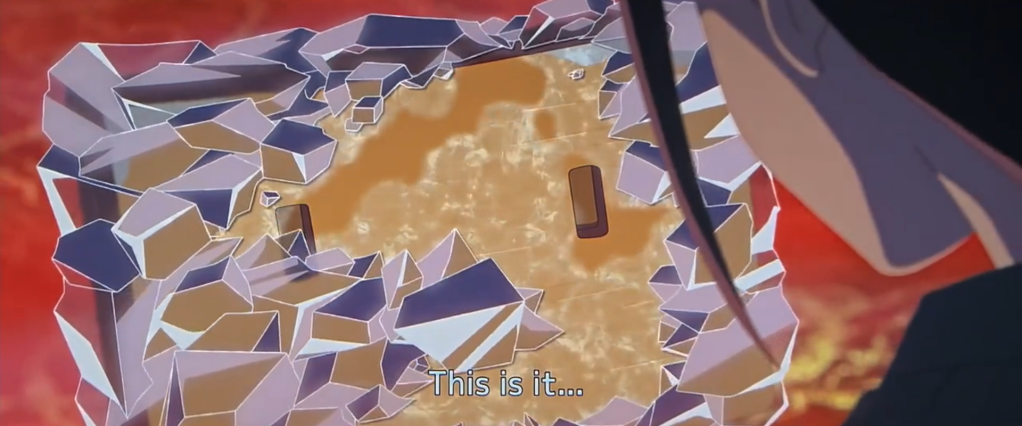
(From Makoto Shinkai’s Suzume no Tojimari)
Daijin in the end sacrifices his life for the love of Suzume knowing that she cannot live without Souta.
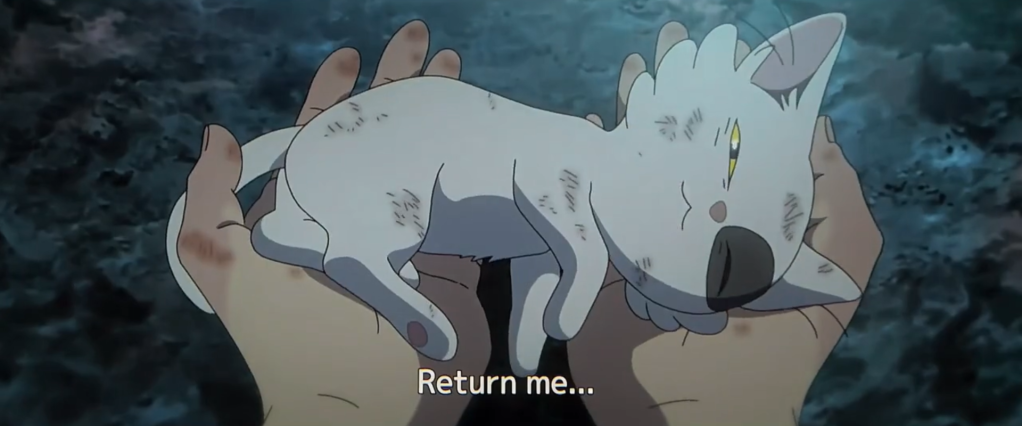
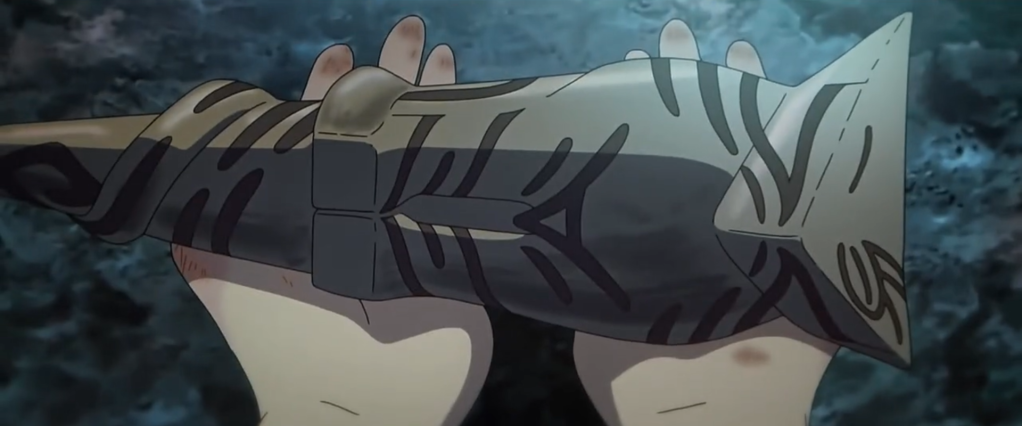
(From Makoto Shinkai’s Suzume no Tojimari)
When we are saying that Suzume’s story is about the memories of loved ones it is also a story of great sacrifices our loved ones and some unrecognized faces make for all of us.
Longing for Life and Intimacy
Souta’s character is one more selfless character who knows the ultimate purpose of his life as a ‘Closer.’ He knows that it is a thankless job but still carries proud in it because it has saved many lives. He knows that value of his life is very small compared to the lives he is saving hence he is ready to risk his life in any situation. This somehow tilts his persona to a practical nihilistic side. He knows that losing his life for a greater cause will be demanded sometimes and he should not get too much attached to his existence. That is also why he chooses to sacrifice his life for saving many lives of Tokyo when there is no other option.
When Suzume returns for Souta only then Souta realizes that there is someone out there in real world who longs for his existence. After that he really longs for life, to live a bit more, to experience life with Suzume. It is made very clear in Souta’s dialogues too. Souta knows that death is inevitable, in spite of that he wants to live more with Suzume.
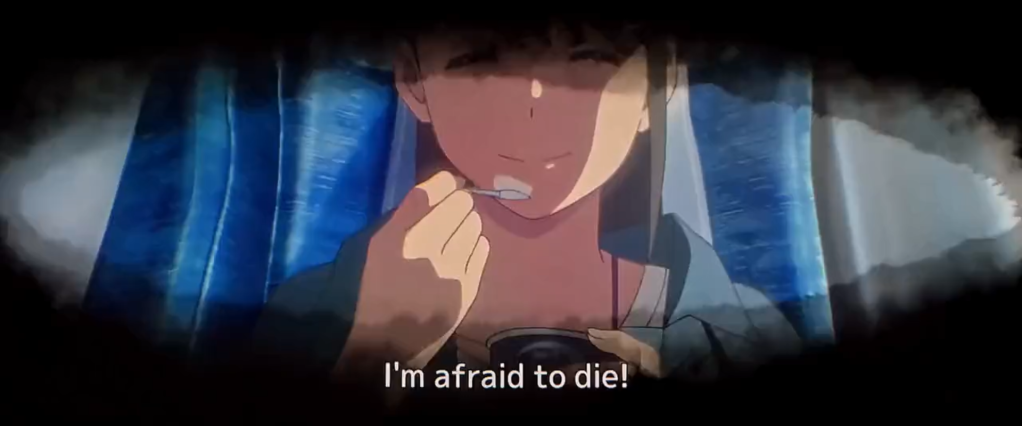
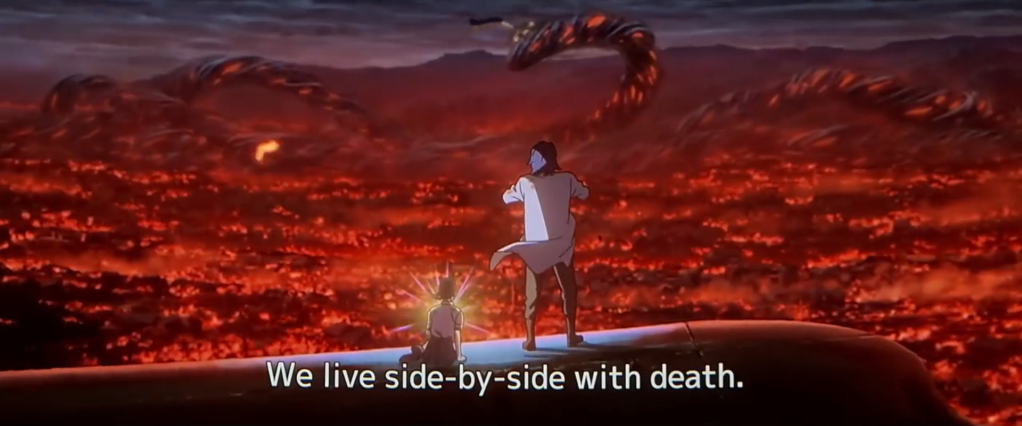
(From Makoto Shinkai’s Suzume no Tojimari)
We as a person in the early and lonely phase of our life (especially in adolescence and youth following after that) think that our existence is just a coincidence, we stick to something “mindlessly” created systems in order to survive and call it a life. We follow the system holistically or try to break that system rebelliously just to have fun senselessly. We think that nothing really matters and it is just some trick played by powerful people and some forces beyond our control that drive our life. We become numb, nihilistic in a way towards the life.
But you know what, deep down we know that our existence is only of worth when others are capable of noticing it. We as a human being long for the appreciation of our sole existence. Until and unless we are not contacted by someone who appreciates our existence that longing does not present itself. When a person realizes the value of sharing an intimacy, sharing of the experiences with other person then he wishes for more from the life even when he knows that it is limited. This is one of the best idea Souta’s character arc presents in the story. We are nothing as a sole existence but when we long for attachment, long for intimacy that opens opportunity for us to understand the worth of other’s lives especially the lives of the people we love which make life meaningful. Otherwise, we are all mechanisms of flesh and bones.
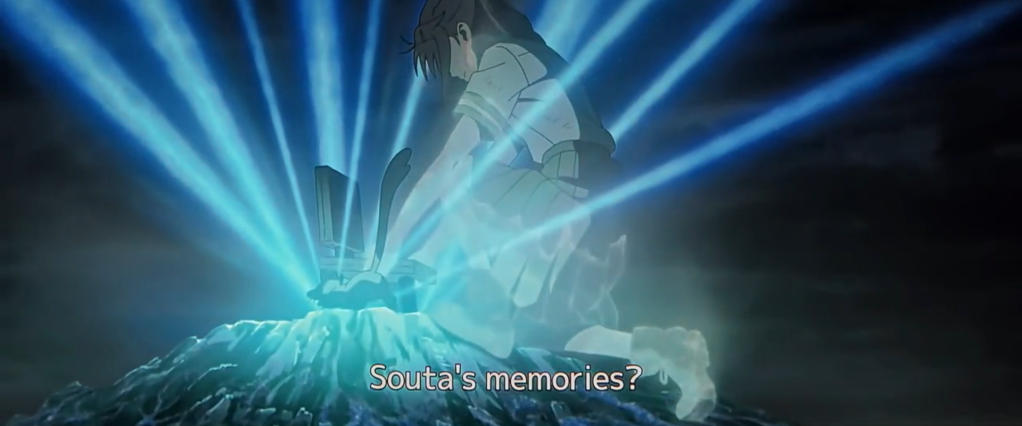
(From Makoto Shinkai’s Suzume no Tojimari)
Koi no Yokan (恋の予感) which is also known as ‘the premonition of love’ is one interesting idea in Japanese culture which is handled very smartly by the story writers here. Koi No Yokan is ‘the feeling upon first meeting someone that you will inevitably fall in love with them’. It is completely different from the concept of love at ‘first sight’. We can see same chemistry between Suzume and Souta.
Balancing the Impact of Memories On Our Personality
One has to appreciate that we are what we think we are. What we think we are can originate from inside or outside, which is also subjective. (It is better if that originates from inside) If we look at our past closely, we will find that we are the culmination of mistakes, lessons, learnings, preferences, likes/ dislikes, satisfaction, fulfillment obtained by the events that happened to us. Most of these experiences are stored as the memories and how they made us feel (some of the experiences are borrowed experiences like – reading a soul shaking book, listening to some really great song or other people’s experiences)
Thus, it will not be an overstatement if we say that ‘we are what we think we are’ and ‘what we think we are is defined by which memories we value the most, feed the most memories.’
Here is how that works. Some people have certain dark childhood memories which induce a psychosomatic disorder in them. There are many such disorders which only originate from certain shocks and traumas especially childhood traumas (like stuttering, anxiety, high blood pressure upon seeing some objects, people) Cognitive Behavioral Therapy helps to treat such conditions by changing the behavior and way of thinking towards such events.
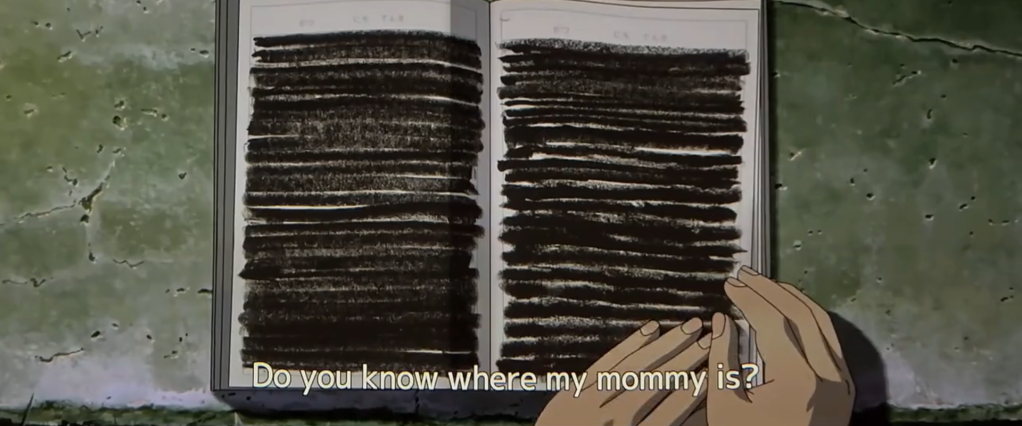
(From Makoto Shinkai’s Suzume no Tojimari)
If you look closely at the story of Suzume and how her story concludes, you will immediately understand that the loss of her mother in her early childhood impacted her personality a lot. She learns nursing because it is what her mother used to do, she beholds that chair crafted by her mother close to her heart, it is the reason why she is always attracted to the doors from where the worm comes out. It is not mere young curiosity that attracts her to the job of closing and locking the doors on the demonic worms, subconsciously she is looking for the clues to meet her mother again in the world beyond those doors. She is still thinking that her mother is out there somewhere or indirectly she is literally and hopelessly hallucinating about meeting her mother. She dares to bring back Souta from the Ever-after not only for the love she develops for him but it is also because she holds the confidence that a person can be brought back from “the Ever-after” to the real world of living as she has met mother there in her childhood. That is the same reason why Souta’s ‘seasoned’ Grandpa also supports her courage to bring back Souta from the Ever-After.
Suzume’s memories of childhood with her mother have made her who she is today, but she is also anchored to the pain and grief from the memories when she lost her mother. Hence, in the conclusion of the story Suzume going back to her hometown and her home and to the exact same door where she thinks she will find her mother is actually the symbolic representation of a person facing the reality of the past traumatic memories. Actually, it is her love for Souta which encourages her to face her childhood trauma, sad memories. Ultimately, Suzume realizes that even though she lost her mother and carries that pain from her loss she was also blessed with the love and care from her aunt; she found many friends on her journey throughout the story and finally she found the purpose and love of her life through Souta.
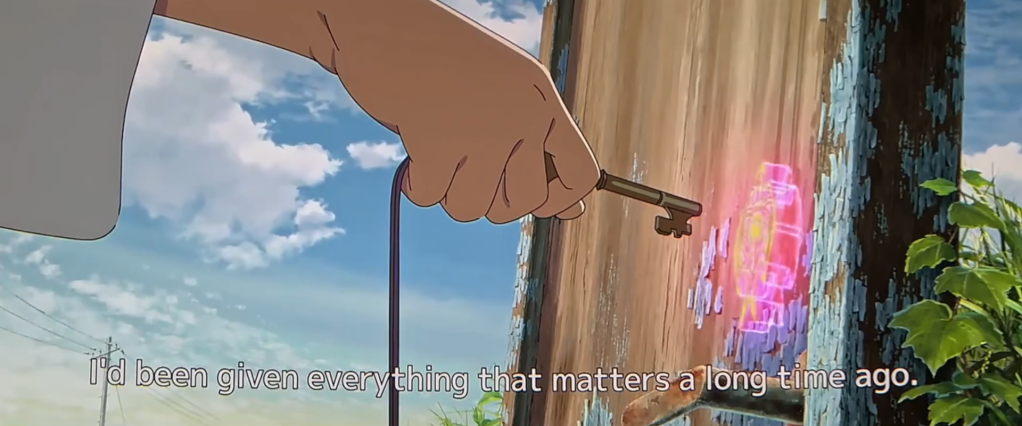
(From Makoto Shinkai’s Suzume no Tojimari)
The Conclusion
Again, our memories are one inseparable part of our personality, as if they are the log entries of how our preferences, habits, tendencies, traits, behaviors emerge out of us. If we cling on to our sad and depressing memories, no doubt it will reflect through our personality and same is with good memories. One important thing to understand is that, if one clings on to their happy memories, then they will surely end up into hopeless optimists. The optimism which always tries to mislead them. Such people will try to find happiness even when they are literally in the deep pits of delusions – they lose their connect with the reality.
So, if holding on to bad memories brings out bad and depressed character and holding on to happy memories makes us hopeless optimist then what should one do? The trick lies in balancing the both types and extracting maximum advantage from them. Instead of drowning down into the abyss of grief from bad memories, one should face them, make amends with them, accept them as the past – an inseparable part of their life and extract the learning and wisdom for the betterment of present and the future life.
That is what exactly Suzume does in the conclusion of the story. Meeting her younger version and sharing the wisdom of optimism is exactly the metaphor for Suzume making amends with her grievous past. She was a hopeless optimist where she is always under the impression that she will bring her dead mother back to real world till that moment. She tells her younger self that even though she has lost her loved one right now, there will be many people in her coming life who will love her, maybe love her more. She also understands that she was wrong when she thought that she lost everything with her mother in her childhood. Suzume here appreciates that she has been given everything that matters to her a long time ago through her aunt, her friends, Souta and sacrifice of Daijin and many more. Suzume learns the value of the good memories she got from all these characters. She creates that balance between the bad and good memories. She now becomes a realistic optimist.
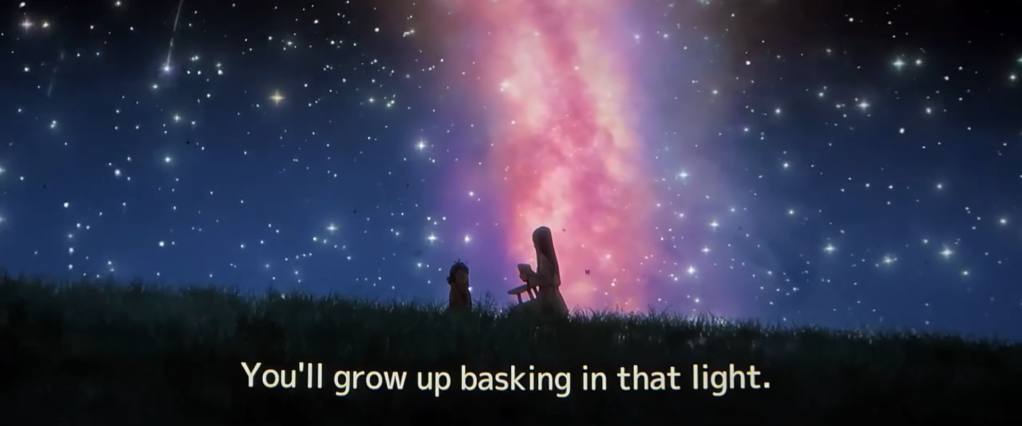
(From Makoto Shinkai’s Suzume no Tojimari)
Memories, Realistic Optimism and Suzume
In single sentence (a long one with multiple clauses) the story of Suzume can be summarized as follows:
“Suzume’s story is the story of impact of memories on our life, character however good and bad they may be and the emergence of the person with realistic optimism from his/her depressing past with a new hope.”
Realistic optimist simultaneously hopes for the best and has full grasp of the boundaries of the reality through the anticipation of the worst-case scenarios (however less probable they may). There was and is a huge support for positivity and heightened optimism from past 15-25 years but people are now realizing that extreme optimism or extreme pessimism will drive the everyone mad. Manifestation is also one trend which has started to hold grip on people. Realistic optimism enables you to learn from bad experiences and implement that wisdom for the betterment of the new experiences – good or bad.
Our memories good and bad carry equal potential to cause either loss or profit. Either you can get depressed from bad memories or learn some tough lessons for future life. Similarly, you can get carried away in the pleasures of happy memories thereby also lose the touch of reality. It is how we balance the account of our happy and sad memories which makes us the person we are.
Anyways, words fail me to explain how intricate and soul-touching Suzume’s story has been woven by its creators. Experience it at an intimate level for once in your life!
